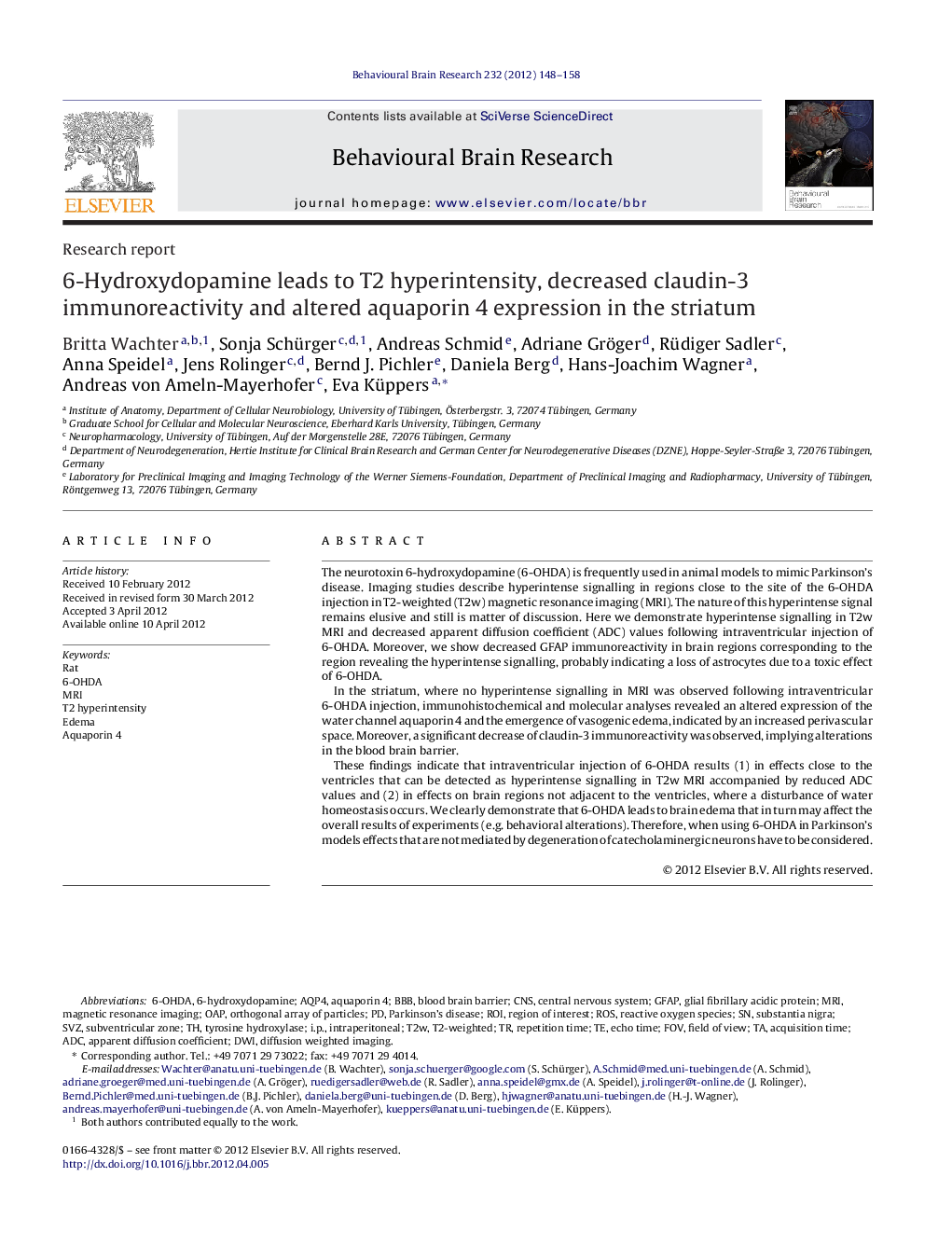| کد مقاله | کد نشریه | سال انتشار | مقاله انگلیسی | نسخه تمام متن |
|---|---|---|---|---|
| 4313107 | 1289985 | 2012 | 11 صفحه PDF | دانلود رایگان |

The neurotoxin 6-hydroxydopamine (6-OHDA) is frequently used in animal models to mimic Parkinson's disease. Imaging studies describe hyperintense signalling in regions close to the site of the 6-OHDA injection in T2-weighted (T2w) magnetic resonance imaging (MRI). The nature of this hyperintense signal remains elusive and still is matter of discussion. Here we demonstrate hyperintense signalling in T2w MRI and decreased apparent diffusion coefficient (ADC) values following intraventricular injection of 6-OHDA. Moreover, we show decreased GFAP immunoreactivity in brain regions corresponding to the region revealing the hyperintense signalling, probably indicating a loss of astrocytes due to a toxic effect of 6-OHDA.In the striatum, where no hyperintense signalling in MRI was observed following intraventricular 6-OHDA injection, immunohistochemical and molecular analyses revealed an altered expression of the water channel aquaporin 4 and the emergence of vasogenic edema, indicated by an increased perivascular space. Moreover, a significant decrease of claudin-3 immunoreactivity was observed, implying alterations in the blood brain barrier.These findings indicate that intraventricular injection of 6-OHDA results (1) in effects close to the ventricles that can be detected as hyperintense signalling in T2w MRI accompanied by reduced ADC values and (2) in effects on brain regions not adjacent to the ventricles, where a disturbance of water homeostasis occurs. We clearly demonstrate that 6-OHDA leads to brain edema that in turn may affect the overall results of experiments (e.g. behavioral alterations). Therefore, when using 6-OHDA in Parkinson's models effects that are not mediated by degeneration of catecholaminergic neurons have to be considered.
► Intraventricular 6-OHDA infusion leads to dose-dependent T2 hyperintense volume in T2w MRI and reduced ADC values.
► Areas not adjacent to the ventricles reveal edema without T2w MRI hyperintensity or change in ADC values.
► Striatal claudin-3 and AQP4 expression is altered.
► Perivascular edema occurs.
Journal: Behavioural Brain Research - Volume 232, Issue 1, 15 June 2012, Pages 148–158